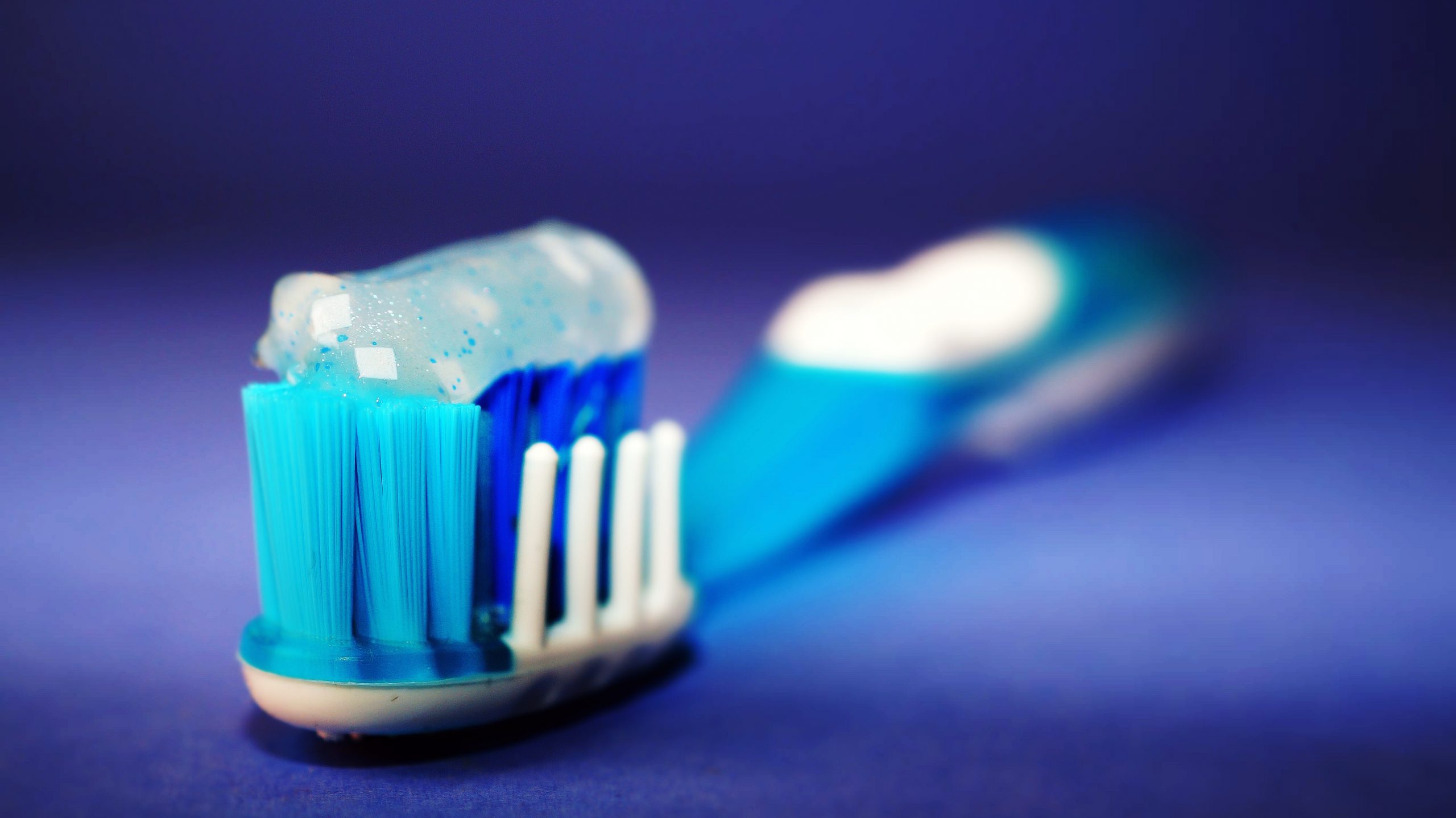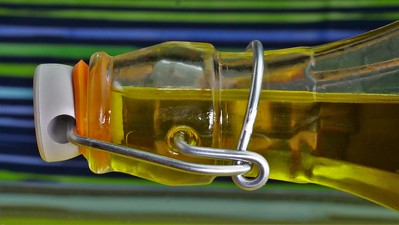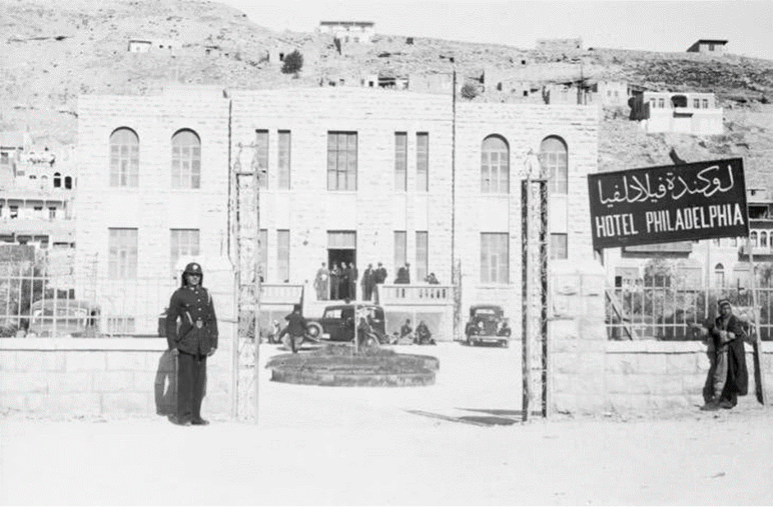“Your teeth hurt because you have some recession,” says my dental hygienist. I’m leaned back in the chair, gritty-mouthed from a cleaning. I’ve never had this problem before, so it takes me a minute to get what she means.
Gum recession is caused in part by not flossing enough, my hygienist explains. “You can try using toothpaste for sensitive teeth. Or I can give you a coupon for an electric toothbrush. I use one—they work great.” She adds, “It’s also caused by overenthusiastic brushing.” The electric toothbrush is supposed to help because it is less vigorous than we are.
I’d always thought I was being thorough and therefore a good tooth-brusher. Harder seems better, right? But maybe I was just overenthusiastic. And really, before this point, maybe I hadn’t been paying enough attention. After college, in my no-dental-insurance years, I had hardly gone to the dentist. When I did get coverage, I tried to avoid those dentists who want to x-ray every two months and fill the tiniest intimation of a cavity, and I was thankful to find my current dentist, who did not use mercury in fillings, who was gentle and thoughtful, and in whose office I felt, usually, no trepidation. Insured or not, though, about the most thought I had given to oral hygiene was mild guilt about not flossing enough, and mild pride in my apparently too-forceful brushing.
*
I do remember the first music I heard in my head while brushing my teeth. This happens in my mind sometimes: if a rhythm is going, a complementary song barges in. My first tooth-brushing music was a track by the metal band Helmet, a group I discovered when I was twelve thanks to my siblings’ and my babysitter, a student at the small college where my dad taught. My babysitter wore plain white T-shirts and Converse and jeans with rolled-up cuffs, and he looked as much like James Dean as anyone did in the early nineties, and although I had a huge crush on him, to which I would never have admitted, he was my dream of more than that—of an ideal person, the platonic human.
So if he liked Helmet, whom he’d mentioned one day when I was hanging out in my dad’s department, I would like them too. I bought a cassette tape at the record store in the mall. Sitting in my parents’ minivan in the YMCA parking lot, waiting for my dad to come out from a swim, I scratched off the shrink wrap, opened the case, and put the tape in the tape deck. The inside of the van was warm, sunlight on the gray plastic dash. The cassette cover was mostly blue and red. Abstract.
As was the music, it turned out. I pushed the play button and an awful, incoherent sound began. I thought the cassette player was broken, or breaking, and checked, and immediately felt embarrassed that I’d had that idea. The tape was fine. But this was not the music I’d imagined my babysitter loving. You could expect him to like strange things, but this—it was hard to comprehend it as music.
After the initial jolt, though, I came to appreciate Helmet. I learned to hear subtle variations in the distortion, to discern a pleasing structure that governed what at first seemed like static. There’s a spot in one of the songs on that album where just one electric guitar does a distorted little riff over and over, before more of the screaming-singing starts. That’s the part I noticed—the first time was in my early twenties, long after the days of my beloved babysitter—running through my head as I brushed. The white space around the sound seemed to share something with the white foam I could picture around the toothbrush, around my teeth. Dada da da dada, da da dadada, back and forth, over and over, until I spat, brushed my tongue (no music there—too soft, I guess, for the riff to come in on), rinsed, spat again.
*
But metal is no friend to the delicate gums, a part of myself I hadn’t given a lot of thought to either. They’re a frame; you only notice them when they start backing away, when suddenly one of your teeth looks aged, haggard, as though a fraction of you were ninety-three.
Only a couple parts of my gums have this problem, and in general, when I go to the dentist, I am praised for the state of my mouth. This is problematic for someone who’s not always been a perfect flosser. Combine poor skills with praise, and what do you get? No change—and, worse, reinforcement of bad habits. On an earlier trip to the dentist, I’d decided to ask for help.
“Will you tell me to floss?” I asked the hygienist, after she’d told me how great my teeth were doing, save for the couple with receding gums, and I had confessed to my negligent ways. “Like, be serious about it. I think it’ll help me do better.”
“All right,” she said, and took a breath. “It’s really important that you floss your teeth.”
“How often?” I pressed.
“Every day,” she said. “Once a day is fine.”
Okay, I thought. I can do that.
I didn’t, not every day, but the command helped me remember to more often. It felt oddly manipulative, asking this of her. But I know that being told to do something by someone with authority can help in the execution of the task. It’s one of the reasons doctors write prescriptions (besides giving the pharmacist permission to dispense): walking out of the doctor’s office with the slip of paper helps you remember to fill it, take it. And it’s why some of us keep taking drawing classes or writing workshops or ballet classes long after we might be called proficient at those things—or long after it’s clear we never will be amazing at them. Procedure, form, constraint. As essential to oral hygiene as to any art.
*
On this most recent visit, my hygienist explains that there’s another solution for excessive brushing. “You could also just brush your teeth more softly,” she says. “How do you usually brush?”
“Um, back and forth,” I say. I mimic pushing the brush horizontally along my teeth. How else do you do it? I think but don’t say. I’ve never been asked how I brush my teeth before. I thought there was just the one way.
She nods, as though this is a common method, or as though it’s a common perception that it’s the only way. “You can brush with your left hand, your nondominant hand. That’ll force you to do it more gently. Or you can brush in circles instead,” she says, making a circling motion, “and then use the brush to flick from the gum downward. That loosens up any food particles stuck at your gumline.”
Food particles. Gross. It’s much more pleasant to think of a sea of white foam than of the detritus hidden within it. But I try to imagine doing this, brushing softly.
“Oh, you said that last time,” I say, suddenly remembering, “and I tried with my left hand and it was hard and I quit.” Then I have an idea. “Will you show me?” I say. “Will you show me how?”
“Sure,” she says. “After I clean your teeth I’ll brush them for you. I’ll get the toothbrush we’re going to give you and we’ll use that.”
This seems possibly even weirder than asking her to order me to floss, but she sounds happy to do it. So after the scritching with the little metal tool and the squirt-and-swish and the suction and the cinnamon toothpaste on the scary polisher I try not to ever look at closely, she frees my new toothbrush from its plastic bubble package, puts some paste on it, and sits down next to me, wearing her paper mask. I’m still wearing my paper bib, held on with alligator clips. (It comes back to me, there in the chair: I first learned the term alligator clips in a dentist’s office, as a kid.)
I open up, and she takes my new toothbrush and makes small circles against the sides of my teeth and gums. The angle is strange, but I get the idea. It almost tickles, the feel of the soft bristles. It’s odd to have this feeling happen because someone else is brushing my teeth instead of me, but kind of nice, too. It’s the sort of help—and I know I’m lucky in this—that I haven’t needed since I was a kid. But my hygienist has just done the industrial version of the task; why should it be strange to demonstrate the at-home version? She is matter-of-fact about it.
I know this brisk cheerfulness—I heard it in my own voice when I was helping to take care of each of my grandfathers as they approached the end of their lives. It wasn’t a choice I made, exactly—the change in tone, the sudden in-charge-ness just came into me; and although I acted with love, I’m not sure how effective I was at creating ease. It can be hard to pull off without years of practice, seeming natural when you’re doing something so intimate for someone else. I admire her style.
*
After she’s done, she steps into the hallway to let my dentist know we’re ready. Waiting, I stare at the plastic animals that are thumb-tacked to the acoustic ceiling tiles, and the poster of a dolphin that says Smile! across the bottom in a typeface with an early-2000s feel: distressed, but in a cheerful way. I dislike it instinctively—as I dislike the ceiling tiles, which are about the least-good-looking thing you could use to make a ceiling. The animals are better. One of them is a red tiger. There are different rules for kids’ things, at least for some of them—a timelessness about their shapes. That’s a perfectly good tiger. (And, plastic being what it is, it will be around for hundreds of years, if not more.)
I wonder how long ago they put those objects up there, and who it was who did it. Clearly it was a well-intended gesture, an effort to distract patients from unpleasant or painful things to come, or from the idea that things will be unpleasant or painful. Instead, the poster, especially, seems more an announcement of the intention to distract from painful things, and thus a reminder of discomfort. It’s chipper in a way that feels utterly inappropriate for the setting, unless you have perfect teeth and really enjoy that little tooth polisher. Do the staff ever consider giving the ceiling decor an update, or do they just forget about it because they never, or rarely, lean back in the chair themselves? And what could they put up there that would work for everyone? Somebody else’s best guess is often way off the mark, especially when it has to serve a lot of different people. Other dentist’s offices, I’ve heard, have installed screens on the ceiling—you can pick whatever soothing image you want, but you have to be looking at a screen. I’d hate that even more.
From my dentist’s treatment rooms, the view for those who are not in a leaned-back position is really nice. Each room has a big, single-pane window, looking out on a garden with mahonia bushes and bird feeders, and there are always birds. It’s pleasing to encounter such a sylvan view from an office like this. I’m surprised by it, thankful for it, each time. This too was a choice.
*
Before long, my dentist comes in to check on things. From the patient’s low angle, he looms over me; but he looms any time, for he is a tall man. It’s a good-natured looming. He wears scrubs, so he is very much that pale green or pale blue.
My dentist always has a thought in his mind, which he will tell you. Once it was about aliens. I’ve forgotten the details—I think because it was a little disconcerting to have the person who is taking care of your teeth expound on the existence of extraterrestrial life, even though that’s a possibility I am open to. I vaguely remember him saying something like, “It’s just a matter of time.” He was probably right.
Today he checks, pokes, briefly. Asks the hygienist about one tooth, using the code tooth language I always try and fail to understand, but never think to look up later. The hygienist tells him something about the mystery tooth; he is satisfied. He is always fast. He’s pretty efficient at filling cavities too. This means he can afford to digress.
When he’s done, I ask him about my gums, and about the sensitive-teeth toothpaste. “Toothpaste is a joke,” he says. “Did you know it didn’t used to foam—they made it foam because people felt like it got their teeth cleaner? And the grittiness—that makes your teeth feel really clean, but it wears away at the enamel over time. Brush and string, that’s all I use.”
“What, with water?” I say.
“Yep,” he says, “just a little water and brush and string. I haven’t had problems with my teeth in years.”
My hygienist is silent.
“If I want toothpaste I’ll just use a little bit,” he continues, “on the end of the brush.” (I always did feel confused by the “pea-sized amount” prescribed on toothpaste tubes. It seemed like such a strange and vague increment of measure. Frozen peas are bigger than canned peas, and fresh peas are all over the map, so which are you supposed to think of? An amount large enough, were it hard rather than squishy, to bother a princess under seven mattresses. A pea made out of toothpaste—a snow pea.) “That’s all it takes,” he says.
This advice sounds weird, especially coming from a dentist, but it’s less weird than aliens, and I am up for many things, and maybe my dentist knows this about me. “Okay,” I say. “I’ll try it.”
A book I started reading recently, but did not finish, includes the story of how toothpaste became minty and foamy. The anecdote is presented as a major marketing coup—alongside the invention of Febreze, which is around where I put the book down—but it doesn’t mention the part about the grit wearing your enamel off. I wonder whether my dentist has read the book, whether that story is commonly scoffed at by toothpaste-disdaining dentists.
When he has left the room, my hygienist turns to me, looking serious. “You can use toothpaste,” she says, as though she’s confiding in me, or maybe consoling me. Then she gets more emphatic. “He has his ideas. But when I don’t use toothpaste, my breath stinks.”
Which suggests that she’s tried it, at least.
“Thanks,” I say, because it’s the kind of statement that seems to need it. “And thanks for teaching me to brush my teeth.”
I say it like I’m joking, a little. But I mean it, and I think she can tell.
*
I can remember just one other time when I’ve been retaught to do something so basic. I was volunteering at a retreat center, as was my friend Flint, who, like my dentist, has particular ideas about the world. He had traveled around the United States on a motorcycle before coming to live at the retreat center, and now he rode a motorcycle to and from the center on errands.
I had been working in a garden that day and was wearing lace-up shoes, impractical in a place whose indoor spaces were mostly bare feet only. I had just come out of a meeting hall and was sitting on the veranda tying my laces when Flint walked by.
“Do you want to know another way to tie your shoes?” he asked. “Those knots will come undone. I know a way that’s a lot better.”
It was just like Flint to have another way to tie shoes and offer to teach it to you. But he sounded so interested in the problem of shoe tying—something I hadn’t before thought of as a problem—and so enthusiastic. “Sure,” I said.
He untied his own shoe and showed me his special knot. It’s a kind of smarter double knot: instead of doing the double part at the end, you wrap twice around after making the first loop and before pushing the second loop through. At first it’s as awkward as that preposition-heavy description sounds. But it cinches down good, and you can pull each lace-end and it will untie, just like a regular knot.
I tied a bow that was more like spaghetti. “Try it again,” said Flint. Where had he learned this? Maybe he picked it up in his travels. Maybe it was a secret motorcyclists’ knot. I tried again.
For the first little while of using this new technique, I kept making big loopy loops. Everything seemed too large, the laces and my fingers. But now I don’t even think about it: I always tie my shoes that way. It really does work better.
Recently I asked Flint about the shoe-tying lesson. He didn’t remember showing me, but my friend Jess, his wife, was not surprised by the story. Flint had a go at saying how his method works: “This knot is tied the same way as a normal knot where the bunny runs around the tree—one lace held in a loop—then goes into his hole. To make it a double knot you just have to make the bunny run twice around the tree before he goes into his hole.”
I could never get that bunny-and-tree thing. It’s something about imagining the end of the string as a separate being from the part of the string it’s going around. It’s all one string! It can’t be a bunny and the tree the bunny goes around too. And the hole the bunny goes into—it’s not the string at all, so how can it even exist in the string-equals-everything equation?
*
To change the way you do something, it helps to have a reference point, a procedure, a clearly elaborated plan for new action. It’s no wonder so many of us are tempted by self-help books. I can change, I can change, but into what? A beautiful butterfly. A more virtuous person. A person who brushes her teeth in small circular motions, gently: a person who thinks about her gums.
I came home from the dentist determined to try my new method—and, if not to stop using toothpaste, at least to use just a little. I stood before the mirror in the bathroom: rental-white walls, except for the one with ill-advised, peeling pink wallpaper; shakily attached sink. This room and its fixtures were not set up to distract their inhabitants from pain. They waved vaguely toward cozy from the vicinity of adequate (or not quite). It was a cute little house, and someone, decades ago, had really gone to town with the wallpaper—a stripy plaid in the kitchen, a floral in the adjacent dining area. But the rental company’s laziness, or maybe calculated indifference to its tenants’ needs, was often enough to make me angry.
This night, though, I had more important things in mind. I squeezed a tiny dab of toothpaste, definitely smaller than pea-sized, onto my brush. I didn’t use my left hand. One new thing at a time. I watched myself as I placed the brush against my molars and tried making small circles with it. My mouth was kind of hanging open to accommodate the movements, and it felt slow and awkward. Toothpaste started to drip from one side of my mouth. My partner, Allen, who is himself known for singing odd little songs around the house and also while driving the car and thus should not judge, walked by the open bathroom door, saw me, and started laughing.
“I learned a new way to brush my teeth!” I said through the toothpaste. “I’m trying it out. Don’t laugh at me.” But I was laughing too, at the strangeness and awkwardness and pleasure of being an absolute novice at something I’d been doing, had thought I knew how to do, for nearly my whole life.
I saw, as I made my clumsy way along the row of my teeth, that somehow “brushing my teeth” had lost its syntactic sense, before. It had become brushingmyteeth, a thing I did in a hurry, without thought, or with almost more thought for the toothbrush than for the individual teeth and gums themselves. The toothbrush, after all, you can see. The toothbrush is made of brightly colored plastic and will last for hundreds of years—maybe even longer than the teeth it briefly cleans. In this way it violates a rule of good tools: that they be modest, that they not occupy more of our attention than the thing they’re meant to act on.
But now I was actually brushing my teeth: engaged in a ritual of care for them. Massaging them, almost, one by one, or at least a couple by a couple. It seemed sweet rather than rote, like a manicure given by a friend. What music is there for this? The action is the music. The circles are. Anything else would be too much.
*
When the hygienist put my new toothbrush in my mouth, I had the same sensation I got once when I unthinkingly put one arm over my head and put a finger in the opposite ear—it felt almost like not me but someone else doing it. You can’t tickle your own self, but you can pretend it’s not you and approximate being tickled. That’s why we can take care of each other better than we can ourselves, I thought to myself as I spat into the sink: because at least sometimes, we can more easily see each other as distinct beings, worthy of care, than we can see the parts of our own selves as such. The string is the string; imagining one part of it as a separate entity—a bunny who might like to go around a tree, much less one who might like their fur brushed, might want their ears scratched—is a challenge.
*
Slowing down helps. Even so, it took time—weeks, a month maybe—to get my new method down. Now I brush my teeth in baby circles, delicate. I don’t have to think of it anymore, don’t have to direct my hand to move in those circles. And even though I’ve lapsed into using a nearly frozen-pea-sized amount of toothpaste again, when I’m in a hurry—when that Helmet riff starts up in my mind and I slip into speeding up, brushing harder—my mouth notices the shift, and I slow down, reminded of the change I’ve made. Am making again. Every morning and evening, this new music.
Anna Lena Phillips Bell is the author of Ornament, winner of the Vassar Miller Poetry Prize, and the chapbook Smaller Songs, from St. Brigid Press. Her work appears in 32 Poems, the Southern Review, Subtropics, A Literary Field Guide to Southern Appalachia, and elsewhere. She teaches at UNC Wilmington, where she has served since 2013 as editor of Ecotone and Lookout Books, and lives with her family near the Cape Fear River.




